Princess Agnes’ copper has been reunited!
VFC says: Please enjoy this lovely post written and photographed by Val Maguire of Southwest Hand Tinning.
A small, very dark saucepan and its matching stick lid, both marked with a coronet (a small crown), an intricate monogram of two entwined E’s and the number “28”, have always been the favorite pieces in my personal copper collection. The saucepan is finely hand formed, with a compass mark and rivets that sit flush to the iron flanges. I’ve had the pair for years, but, only just last Summer, VFC identified the royal monogram as that of Ernst I, Duke of Saxony-Altenburg (present day Thuringia) in GERMANY! The entwined E’s are presumed to represent Ernst I (1826-1908) and his ancestor Ernst I the Pious (1601-1675).

Careful inspection, however, reveals that the monogrammed coronet only displays three visible arches instead of the five associated with a Duke (Herzogkrone).
This coronet would seem to be associated with a princely house, the non-reigning descendants of a Fürst titled and referred to in German as Prinz (prince) or Prinzessin (princess). Couple the Fürstenkrone coronet with an “A” designed into the monogram, and the mark appears to refer to the Duke’s wife, Princess Agnes of Anhalt-Dessau (1824-1897). This is Princess Agnes’ copper!

Last Fall, a fellow copper enthusiast (the owner of the Duke of Westminster’s Duckies!) posted a link to an auction house in Dusseldorf, Germany selling entwined-E‑marked copper cookware in the astonishingly incorrect grouping of “Important Russian & Greek Icons” on Facebook. I nearly died! It was a month until the auction, and I had to reunite Princess Agnes’ copper! Fortunately, I was incredibly lucky, not only that I received the auction tip, but that no one interested in important French copper would have been following this auction because of the category.
In November, two round gratins (marked “1” and 2”), two oval gratins (marked “2” and 4”), and a braisière joined my lidded saucepan. Wow, what amazing pieces!

The braisière is exquisite – look at the stunning swing handles – and arrived with a surprise – the original insert, which is also monogrammed! None of the pieces have a makers mark and I believe that finding a marked piece with these very unique handles will be the key to identifying the chaudronnier.

 Another mystery is exactly how did French copper make its way to the Schlosskirche Altenburg? There are a few ideas to explore…
Another mystery is exactly how did French copper make its way to the Schlosskirche Altenburg? There are a few ideas to explore…
First, Duke Ernst I was in Versailles in 1871 when Wilhelm I was crowned German Emperor after the Franco-Prussian war. Is it possible that he saw French copper while there and later commissioned these pieces from one of the great Parisian master chaudronniers? Or, it could be that the pans were a gift presented to Agnes in 1878 when two important things happened – a new railway station opened in Altenburg, and Ernst gave Agnes the Princess Cross for their 25th wedding anniversary.
Another idea is that Agnes herself traveled to France to commission the pans. A clue to this possibility is Agnes’ carte de visite (CDV) that I procured from a French seller. This visiting or calling card is a thin albumen print mounted on a thicker paper and is marked, “Duchesse D’Altenburg” on the reverse side.

Since acquiring the batterie, I have become quite fascinated with Princess Agnes. She appears to have been a well-liked and intelligent woman. In 1893 she published Ein Wort an Israel, a progressive book that discussed anti‑Semitism and Christianity in Germany. Amazingly, I was able to acquire a copy from a specialty antiquarian bookshop in Brooklyn, NY whose motto is, “We find Good Homes for Nice Jewish Books.”

Princess Agnes was noted to be a talented painter and, like many noblewomen, took an interest in charity work, specifically education and nursing. By all accounts, her marriage to Duke Ernst I was a happy one and the two were devoted to each other. Aw, ❤!
Here at Southwest Hand Tinning, it’s my hope to conservatively restore all of the batterie except for the braisière and insert, which are in fine condition. Since the little lidded saucepan is marked “28”, I assume that there are at least two dozen more pieces of Princess Agnes’ copper waiting to be found and reunited. Any information from the VFC Village would be greatly appreciated!

— Valerie Maguire, Cave Creek, AZ
VFC says: Val, thank you so much for reuniting pieces from this collection, and for sharing their story with us! Princess Agnes does seem like a wonderful woman who lived a full life. I am sure she would be surprised but pleased that her copper has survived to this day. We are all fortunate that you are now their caretaker, and I wish you success in finding more pieces to bring home!

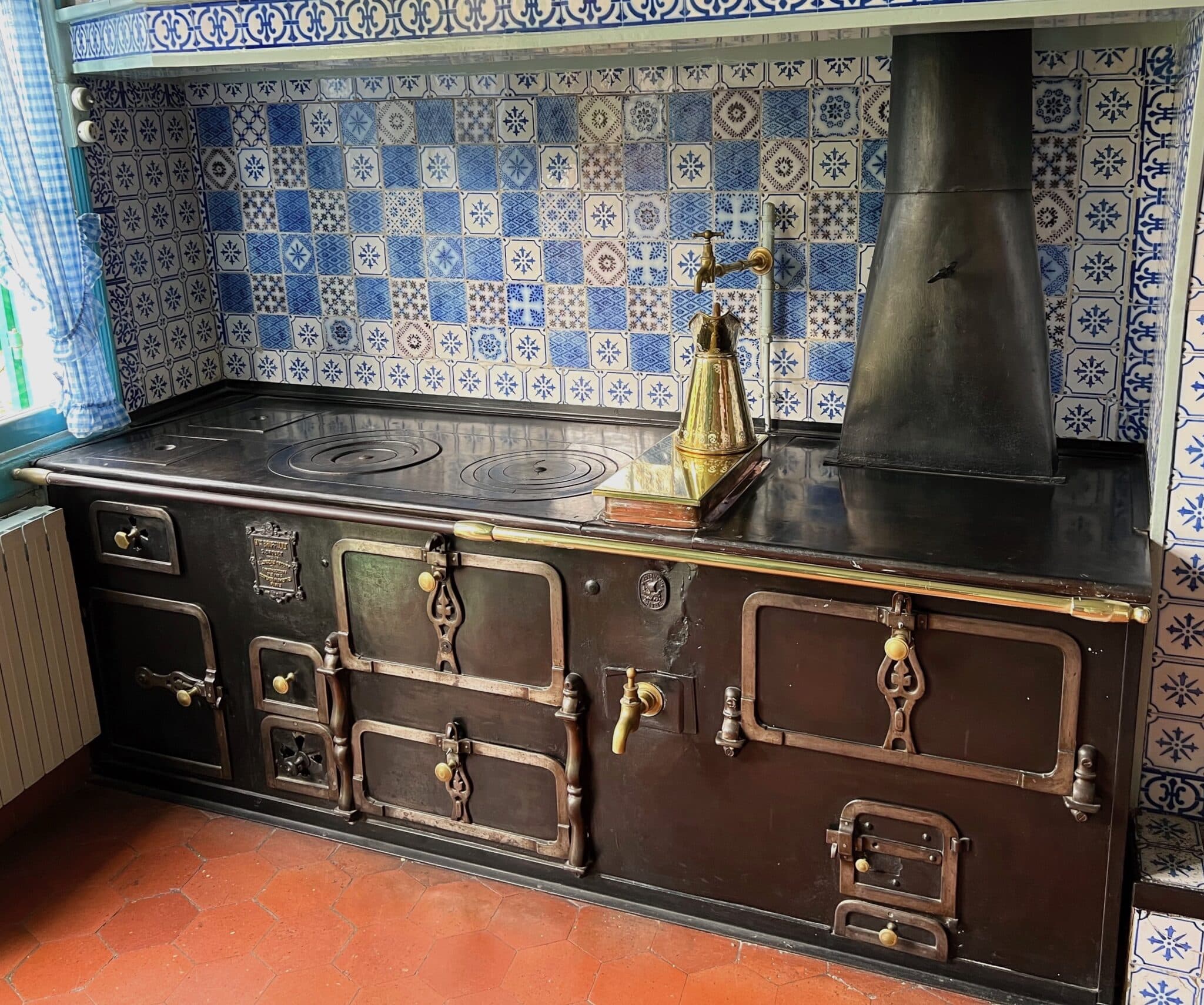
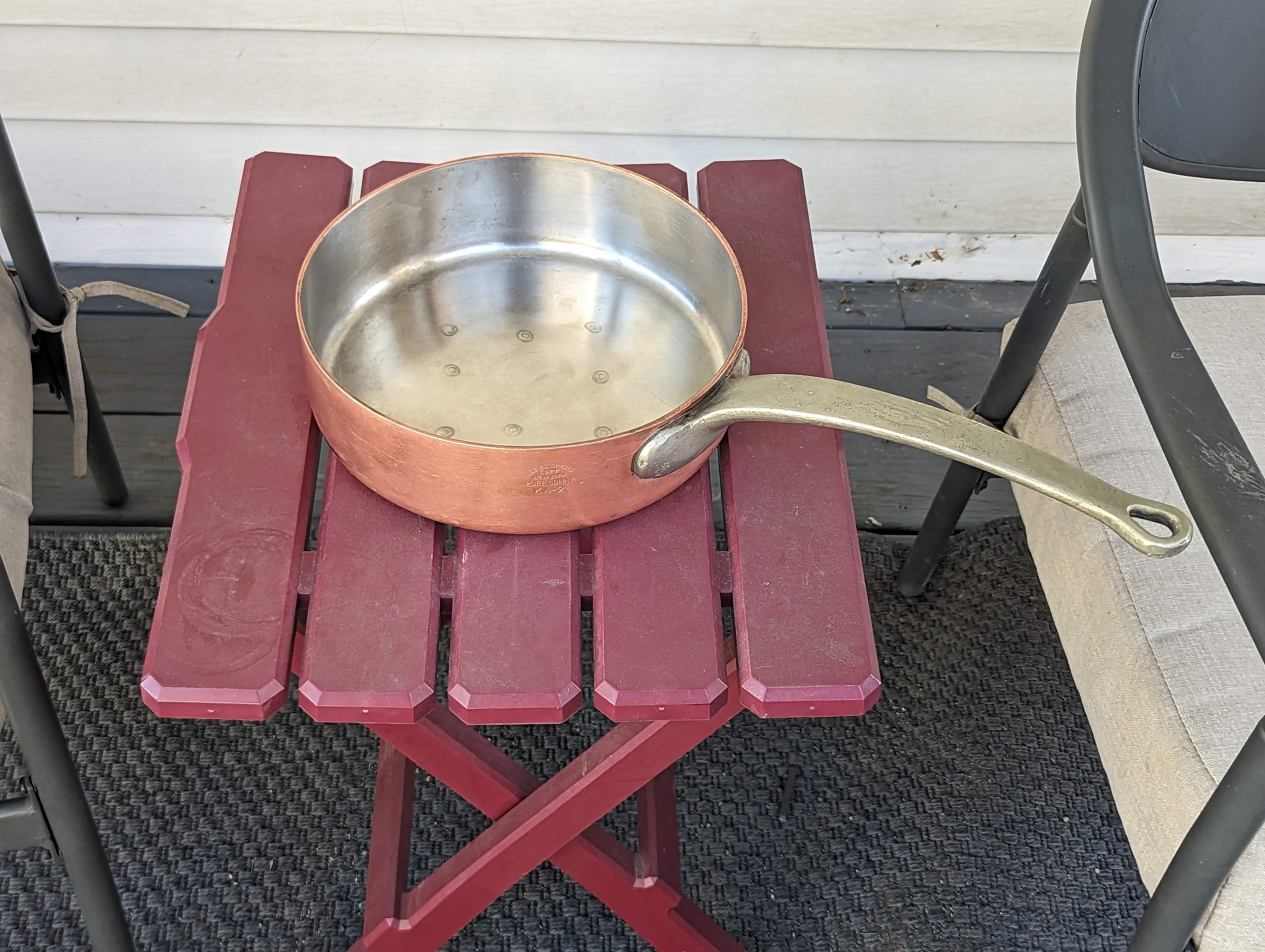
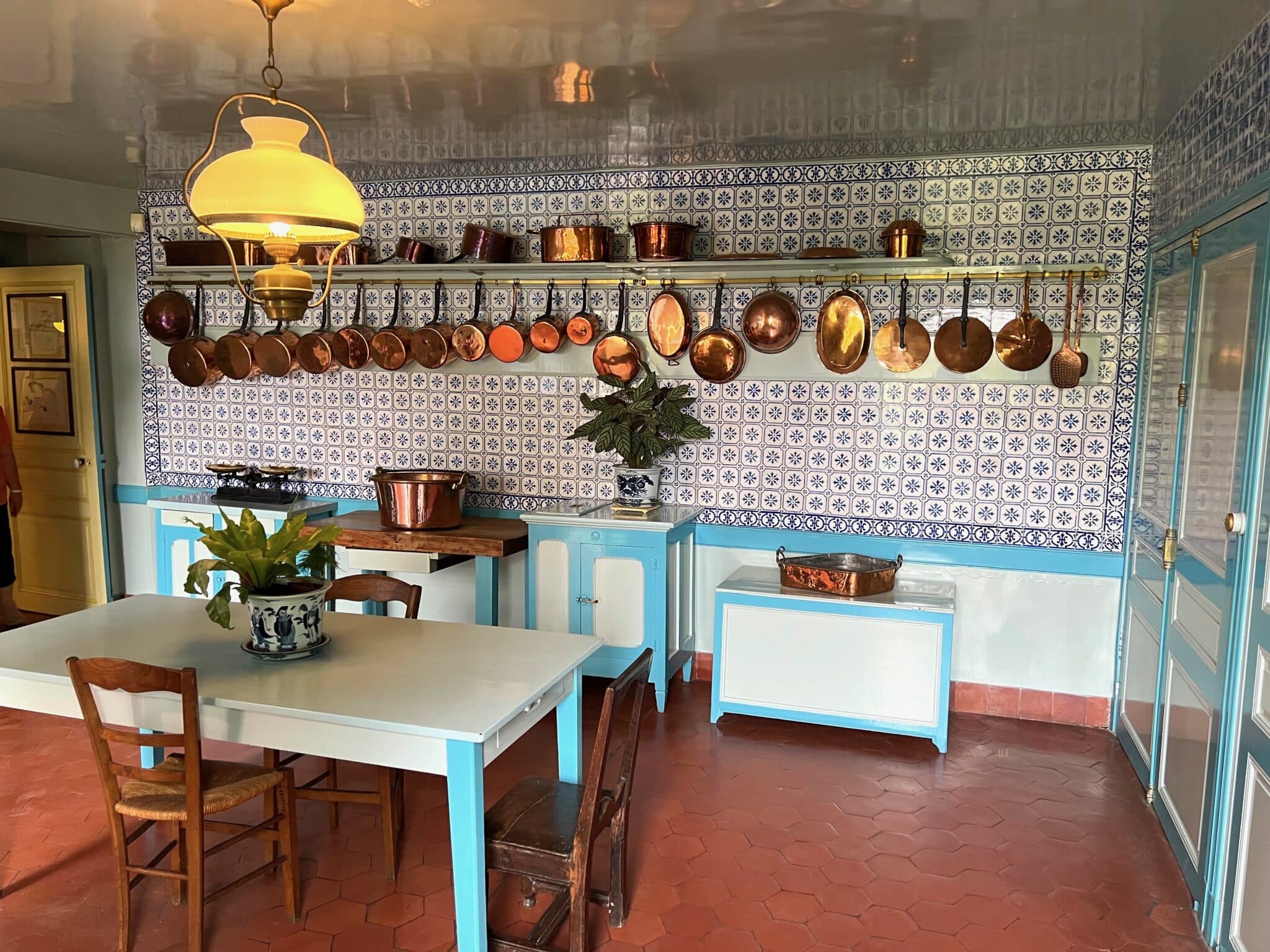
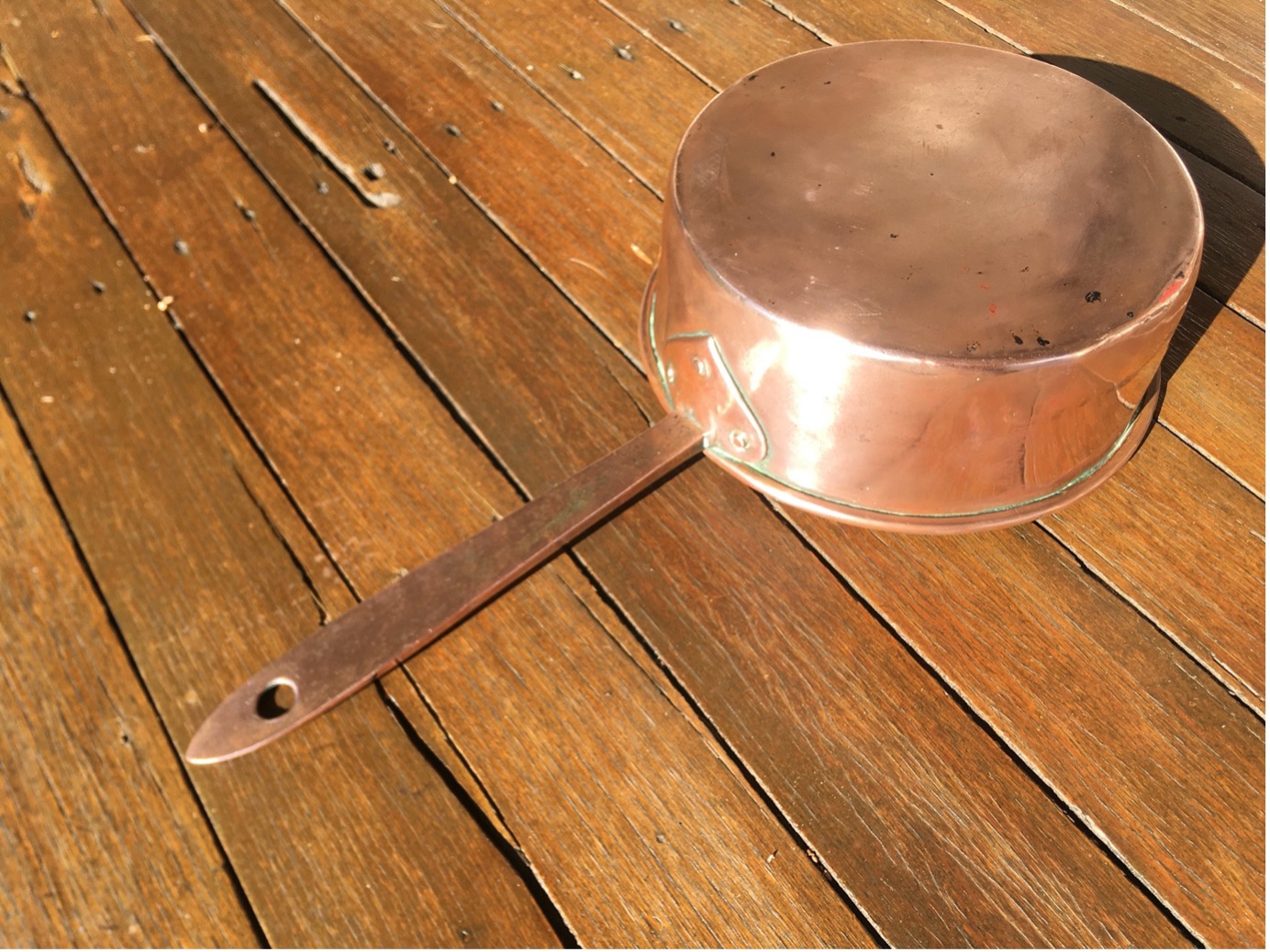
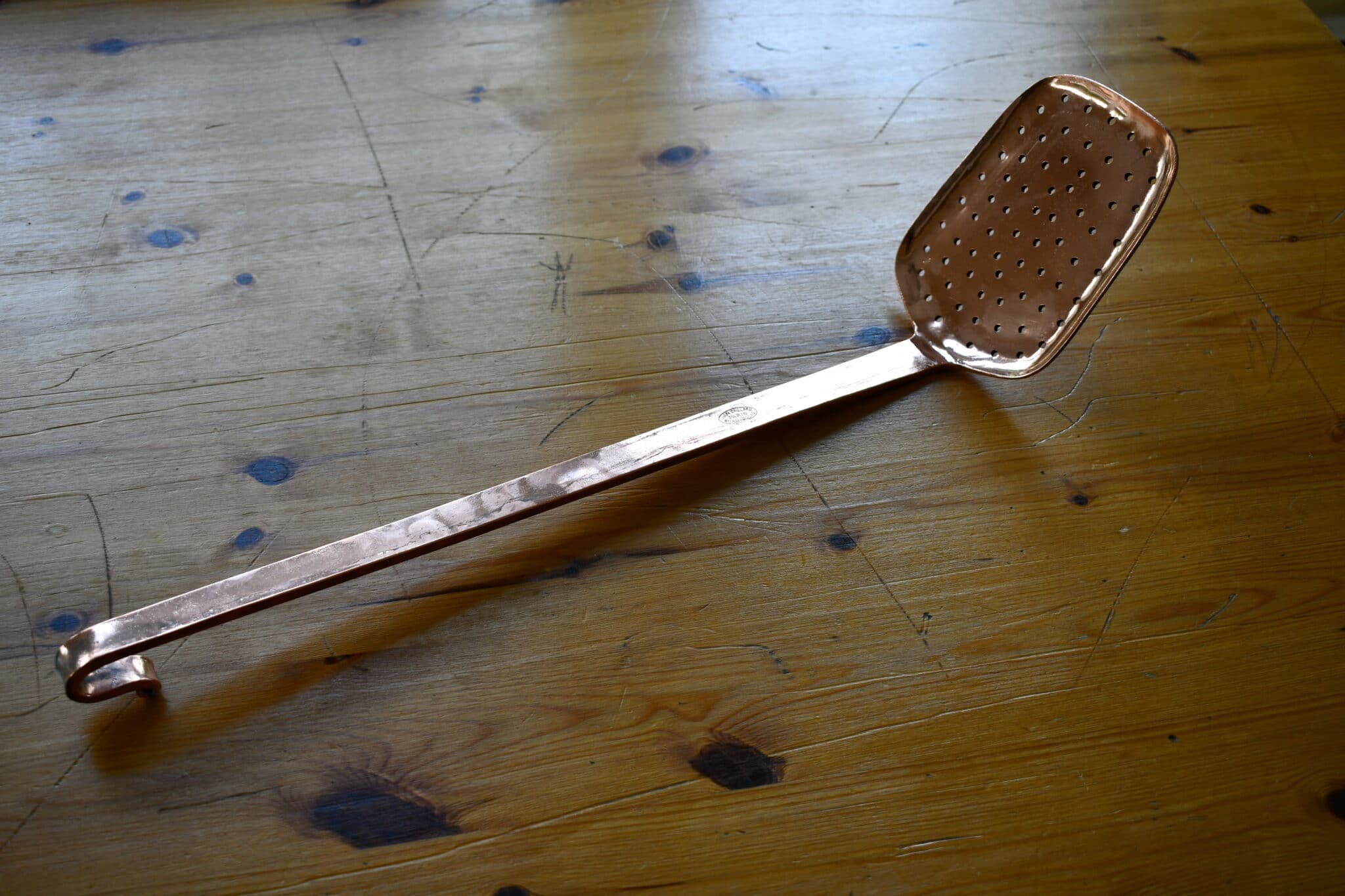
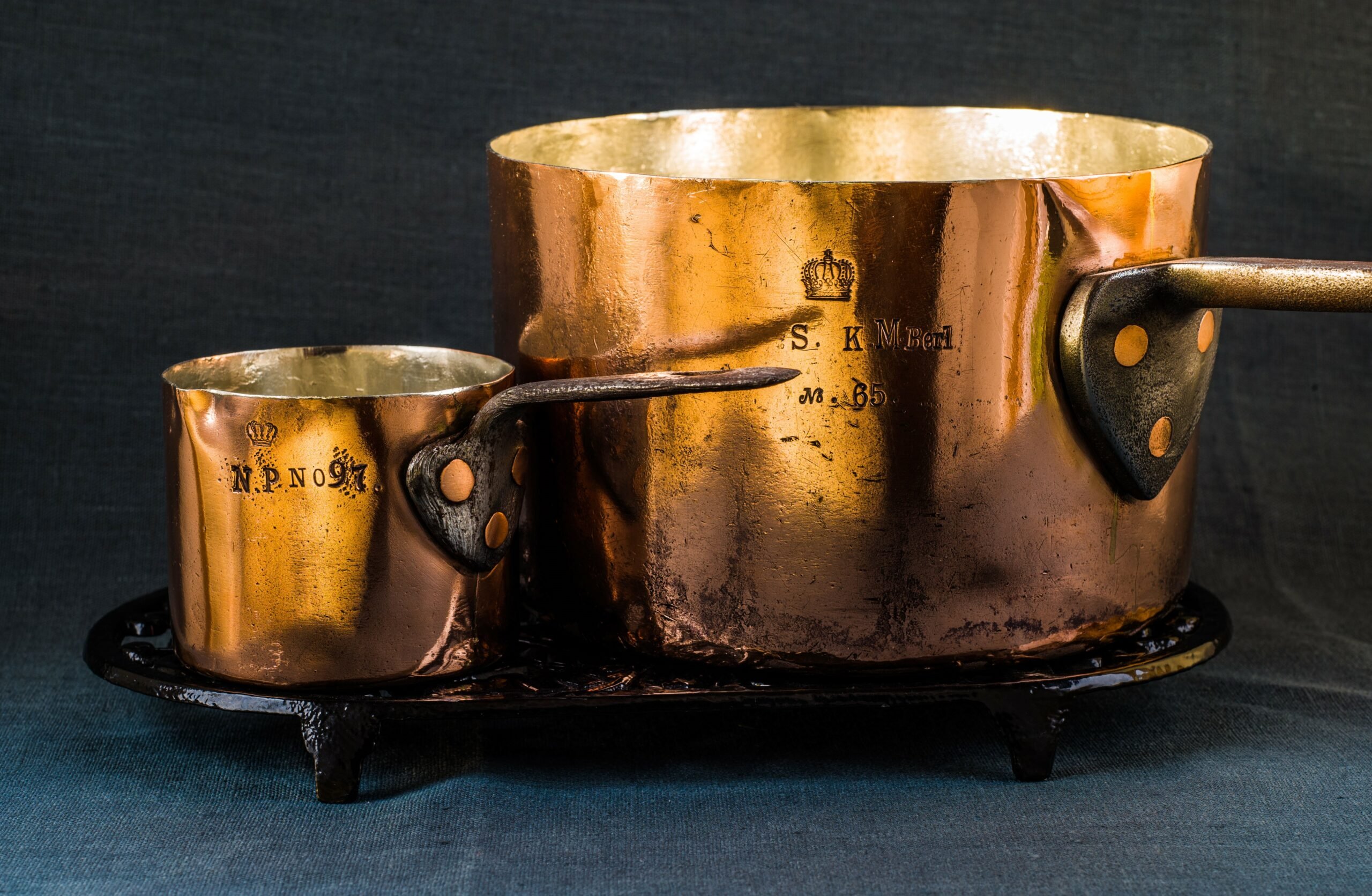
Valery, a great find, aesthetically photographed and complemented with a very interesting story. As soon as I have more time (currently my son is visiting and therefore the focus), I will delve into the life story of this noblewoman and pick up the trail of this copper. Thank you for sharing your discovery with us.
Val, great historical copper finds and nice detective work on their history. Best of luck in discovering more of Princess Agnes’ copperware.
Hello Val,
Such beautiful pieces, Regards the braisière swing handles, take a look on VFCs home page for the 36cm Dehillerin stewpot “Cité Universitaire de Paris”
It also has that same type of swing handle design.
Good luck with your search.
Steve Nash, ( FrenchAntiquity.)